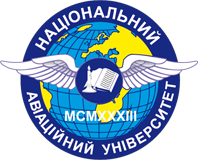APPLICATIONS OF THE INTERNET OF THINGS IN PREVENTIVE CONSERVATION
DOI:
https://doi.org/10.32782/uad.2024.3.10Keywords:
preventive conservation, cultural heritage, microclimate monitoring, Internet of Things, cloud technologies, data management, ethical issues.Abstract
The article explores the integration of the Internet of Things (IoT) into the practice of preventive conservation of cultural heritage, focusing on enhancing methods for preserving objects under changing environmental conditions and technological advancement. Special attention is given to the potential of IoT for continuous monitoring and management of the state of cultural objects, as well as the role of cloud technologies in real-time data processing and storage obtained from sensors. The study analyzes current IoT technologies that provide monitoring of microclimatic conditions (temperature, humidity, lighting, and air pollution), with examples of successful implementation in projects such as like the Newsteo IoT systems at the Louvre, MUSECORR, Collection Care, etc. The advantages of using IoT are assessed, including the automation of management processes, increased cost-efficiency, and reduced risk of damage to objects. The article also discusses the risks and ethical issues associated with the use of IoT, such as data security, technical barriers, and economic costs. The conclusions emphasize the need for further research in the direction of improving sensor technologies, integrating data from different sources, and creating universal platforms for the effective preservation of cultural heritage.
References
Тимченко Т. Р. Методи захисту основ станкового живопису: Навчальний посібник. К.: Задруга, 2015. 106 c.
Борисенко М. Превентивна консервація як інструмент збереження культурного надбання. Актуальнi питання гуманiтарних наук. 2021, 35(1), 26–31. URL: https://doi.org/10.24919/2308-4863/35-1-4
Возняк Т. Досвід організації музейної діяльності в ситуації війни. Львівська національна галерея мистецтв імені Б.Г. Возницького. (18 листопада 2023). URL: https://lvivgallery.org.ua/news/tarasvoznyak-dosvid-organizaciyi-muzeynoyi-diyalnosti-v-sytuaciyi-viyny
ThomsonG. The museum environment (2nd ed.). London : Butterworths, 1986. 312 p.
Camuffo D., Della Valle A., Becherini F. The European standard EN 15757 concerning specifications for relative humidity: suggested improvements for its revision. Atmosphere. 2022. Vol. 13, no. 9. P. 1344. URL: https://doi.org/10.3390/atmos13091344.
Numerical modelling of mechanical degradation of canvas paintings under desiccation / D. S. H. Lee et al. Heritage Science. 2022. Vol. 10, no. 1. URL: https://doi.org/10.1186/s40494-022-00763-w.
Balancing Significance and Maintaining ‘Sense of Place’ in the Sustainable Display of Tudor Tapestries in the Great Hall, Hampton Court Palace / K. Frame et al. Studies in Conservation. 2018. Vol. 63, sup1. P. 87–93. URL: https://doi.org/10.1080/00393630.2018.1497320.
An energy-efficient Internet of Things (IoT) architecture for preventive conservation of cultural heritage / A. Perles et
al. Future Generation Computer Systems. 2018. Vol. 81. P. 566–581. URL: https://doi.org/10.1016/j.future.2017.06.030.
Chianese A., Piccialli F. Designing a Smart Museum: When cultural heritage joins IoT. 2014 Eighth International Conference on Next Generation Mobile Apps, Services and Technologies (NGMAST), Oxford, UK, 10–12 Sept. 2014. 2014. URL: https://doi.org/10.1109/ngmast.2014.21.
TrZE. THE LOUVRE: Temperature and humidity in an exhibit hall – Newsteo. Newsteo: website, 2021. URL: https://www.newsteo.com/en/portfolio-items/louvre-climate-conditions-monitoring/.
Institut de la Corrosion & nke-instrumentation. (n.d.). AIRCORR loggers: real-time monitoring of indoor and outdoor corrosivity and air quality [Dataset]. https://nke-instrumentation.com/wp-content/uploads/2019/05/AirCorr-brochure.pdf
Real-time monitoring of indoor air corrosivity in cultural heritage institutions with metallic electrical resistance sensors / T. Prošek et al. Studies in Conservation. 2013. Vol. 58, no. 2. P. 117–128. URL: https://doi.org/10.1179/2047058412y.0000000080.
Cimino V. The conservation of the Vatican Museums: a ten-year project completed. Città del Vaticano : Edizioni Musei vaticani, 2016. 168 p.
The Project. Collection Care.URL: https://www.collectioncare.eu/
Microclimatic monitoring of the Duomo (Milan Cathedral): Risks-based analysis for the conservation of its cultural heritage / N. Aste et al. Building and Environment. 2019. Vol. 148. P. 240–257. URL: https://doi.org/10.1016/j.buildenv.2018.11.015.
A portable tool for the evaluation of microclimate conditions within museum enclosures, transit frames, and transport cases / M. Odlyha et al. Studies in Conservation. 2018. Vol. 63, sup1. P. 407–410. URL: https://doi.org/10.1080/00393630.2018.1499841.
Alsuhly G., Khattab A. An IoT Monitoring and Control Platform for Museum Content Conservation. 2018 Int.l Conf. on Computer and Applications (ICCA), Beirut, 25–26 August 2018. 2018. URL: https://doi.org/10.1109/comapp.2018.8460402.
Perles, A., Fuster-López, L., & Bosco, E. Preventive conservation, predictive analysis and environmental monitoring. Heritage Science. 2024. Vol. 12, no. 1. URL: https://doi.org/10.1186/s40494-023-01118-9.








